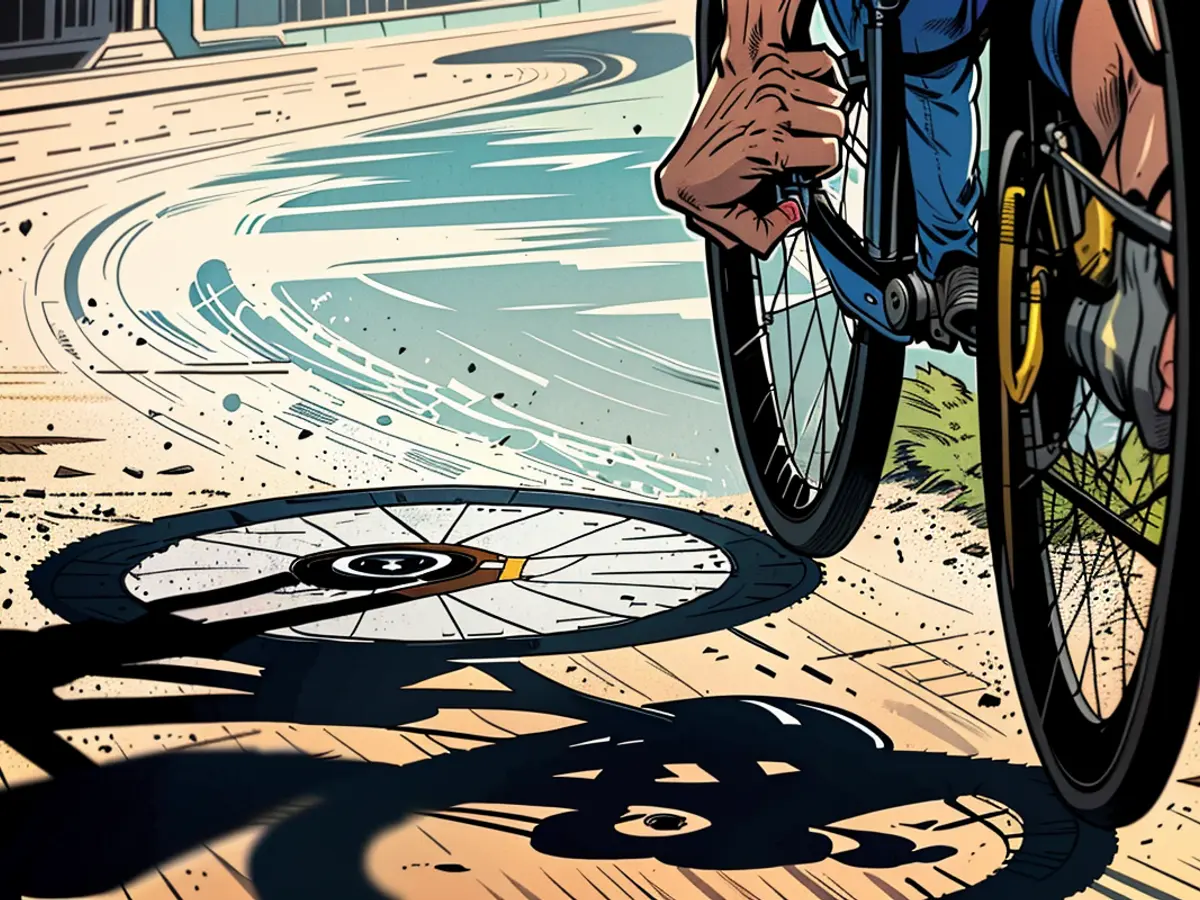If the cyclist hits a car with his head down
On a racing bike, a lower riding position often helps you move forward faster. However, you must always keep an eye on traffic. This is shown by a court ruling on a unique rear-end collision case.
A cyclist must bear sole responsibility for an accident if the crash occurred due to their lowered head position. This is evident from a ruling by the Naumburg Higher Regional Court, as pointed out by the Traffic Law Working Group of the German Bar Association (DAV) (Case No.: 9 U 74/23).
The case: A car driver had stopped on the right side of the road to make a phone call. A cyclist crashed into the stationary vehicle. The cyclist claimed that due to exertion, he had briefly lifted his head and noticed the defendant's vehicle - but then lowered his head again and failed to notice that the car was stationary. He was found solely responsible for the crash. He appealed the decision, but to no avail.
Cyclist practically blind, court rules
The court ruled that the cyclist had violated the duty to keep a lookout. He should have continuously monitored the traffic situation, rather than just briefly lifting his head. A racing cyclist who is practically blind due to a lowered head position should only travel at a speed of 0 km/h, as the distance that can be overlooked is 0 meters, the judges stated.
Therefore, the cyclist had not only violated the duty to keep a lookout but also the duty of care in traffic regulations. Even a racing cyclist must pay attention to how the vehicle perceived at a distance behaves while continuing to ride. If the cyclist had kept the road in view, he would have noticed that his opponent was stationary and formed an obstacle. The car's inherent risk was completely overshadowed by the plaintiff's misconduct, and he had to bear full responsibility and cover the damage alone.
Regarding the proceedings: The Regional Court dismissed the lawsuit. The cyclist filed an appeal. The Higher Regional Court, as the next higher instance, decided in its ruling that the appeal had no prospect of success.
The ruling emphasized that even a racing cyclist, who might lower their head for optimal speed, is still responsible for maintaining a safe distance and continuously monitoring the traffic situation to avoid accidents. In fact, the court stated that a cyclist with a lowered head position, effectively becoming practically blind, should only travel at a speed of 0 km/h due to the zero-meter distance they cannot perceive.







